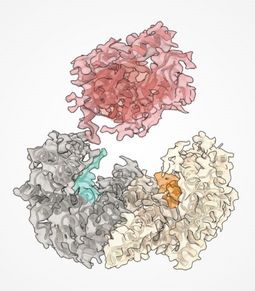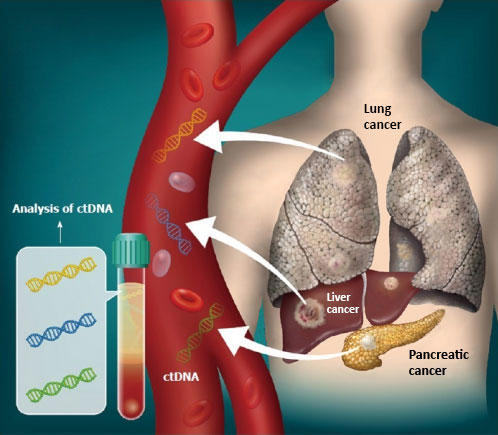Researchers led by Université de Montréal pathology and cell-biology professor Marc Therrien have identified major structural changes that enable the BRAF protein to escape control and mimic its activation, giving it strong potential to cause cancer.
At the intracellular signaling research unit Therrien heads at the Institute for Research in Immunology and Cancer (IRIC), his team also completely restored the protein's normal conformational state using small molecules - a breakthrough.
Published today in Science, the study was done by co-first authors Hugo Lavoie, Ting Jin and Driss Lajoie, all of IRIC, in close collaboration with research teams at NYU Langone (New York), Université de Bordeaux and the University of Calgary.
An altered structure that "mimics" the active form of BRAF
Around half of all of cancers are associated with dysfunction of the MAPK pathway, a communication system that enables cells to integrate external signals and provide appropriate cellular responses. At the heart of this pathway, a protein called BRAF acts as a molecular switch that must be rigorously controlled. Frequently affected by so-called oncogenic mutations, BRAF is implicated in several human cancers.
In its normal state, the BRAF protein remains confined to an inactive form, through a mechanism of auto-inhibition that is critical for preserving the fine, correct regulation of the MAPK pathway. However, some mutations allow it to "escape", adopting a form that mimics its active state, and triggering uncontrolled signaling at the origin of thyroid, skin, colon and lung and other cancers.
How does it work? Therrien's team has cracked part of the mystery.
Using cryo-electron microscopy experiments, which enable the three-dimensional structure of complex biological samples to be studied, Therrien and his colleagues succeeded in identifying major structural changes caused by BRAF mutations that enable it to activate abnormally.
In short, oncogenic forms of BRAF adopt a structure that is almost identical to the naturally active form of the protein. Altered forms of BRAF can thus escape the auto-inhibition mechanism and, in a way, bypass the cell's internal safety controls. It is as if BRAF acquired the disguise of an active form to trigger cell proliferation without limits.
A small helix with great therapeutic potential
At the heart of this escape strategy is a helix called alpha-C. In mutated forms, this segment of the protein adopts a position similar to that of the active form of BRAF. Therrien's team used small molecule inhibitors to target the alpha-C helix and impact its positioning. Some of the inhibitors tested were able to convert the hyperactive oncogenic form back to the inactive autoinhibited state of BRAF.
These results confirm the central role played by this structure in the major structural reconfiguration of oncogenic forms of BRAF, the researchers say. Furthermore, the complete conformational "reconversion" of a mutant protein by a therapeutic molecule represents a first in their field of research.
Providing a better understanding of the underlying determinants of BRAF's oncogenic potential, the new study also paves the way for the optimization of new classes of small molecule inhibitors that could better neutralize oncogenic "fugitives" and convert them back to an inactive state before they take control of the cell.
About this study
"BRAF oncogenic mutants evade autoinhibition through a common mechanism," by Marc Therrien et al., was published May 29, 2025 in Science.







